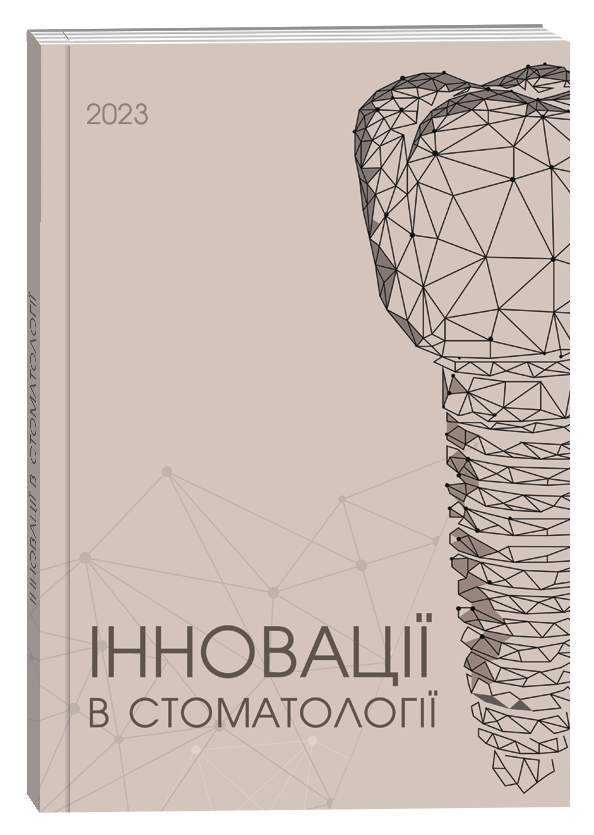INFLAMMATORY LESIONS OF FACIAL CELLULAR SPACES AS A PROBLEM OF THE 21ST CENTURY
DOI:
https://doi.org/10.35220/2523-420X/2025.1.2Keywords:
inflammatory disease, complex treatment, inflammation, analysisAbstract
The aim to highlight the current understanding of the problem of inflammatory lesions of facial tissue spaces.Materials and methods. The article presents data from 57 sources of authors from 26 countries published on the Internet for the period 2020–2025. The choice of sources was random. We studied the material that met the criteria for inclusion on the first page of the internet search for the keywords “phlegmon of the face”, “purulent cellulite”, “maxillofacial area”. The process of our research work included the following stages: formulation of the purpose and objectives of the study, literature search, assessment of the quality of a «certain» source, data extraction, analysis of the state of the subject in research. Results.As a result of the study, it was determined that purulent, including odontogenic, lesions of facial adipose tissue are diseases, that are characteristic not only for societies with low incomes, but also for economically and socially developed countries. Data was also found indicating the concern of modern specialists and researchers about the current situation of odontogenic purulent lesions of facial adipose tissue due to the severity of their course, dangerous complications and possible negative consequences of the disease. In the studied material, there were 23 publications by European authors (40.35 %), 3 authors from the Middle East (5.26 %), 6 from Asian countries (10.52 %), 15 from North America (26.31 %), 4 from South America (7.01 %), 2 from Australia (3.50 %), 4 from Africa (7.0 1 %). Odontogenic phlegmons and cellulitis were described in 43 (75.4 %) publications, non-odontogenic – in 14 (24.56 %). Conclusions.The problem of inflammatory lesions of the cellular spaces of the face and neck of various etiologies remains relevant on all continents of the world, even in the developed countries of America, Europe and Asia. Different aspects of this problem are being studied in different countries.However, they all have one thing in common – the task of developing effective methods of treatment and preventing the occurrence of serious complications.
References
Actor, J. K., Nguyen, T. K. T., Wasik-Smietana, A., & Kruzel, M. L. (2023) Modulation of TDM-induced granuloma pathology by human lactoferrin: a persistent effect in mice. Biometals, 36(3), 603-615. doi:10.1007/s10534-022-00434-0.
Kiptiliy, A. V. (2023). Comparative characteristics of treatment methods for patients with odontogenic phlegmons. Ukrainian dental Almanac, 1, 21–25.
Lychman, V. O., Lokes, K. P., Avetikov, D. S., Gorlach, N. V., Goncharenko, O. O., & Sharaj, Ju. R. (2021). Influence of cryopreserved placenta on the dynamics of Clinical Parameters in the treatment of patients with maxillofacial phlegmons, taking into account the circadian rhythm. Ukrainian dental Almanac, 4, 11–14. doi:10.31718/2409-0255.4.2021.02
Pirvulescu, Ruxandra A. & et al. (2024). Odontogenic Orbital Cellulitis at the Crossroads of Surgeries: Multidisciplinary Management and Review. Diagnostics (Basel, Switzerland, 14(13), 1391. 10.3390/diagnostics14131391
Perez, A., Cimini, V., Lenoir, V., & Lombardi, T. (2024). Facial Cellulitis of Unusual Odontogenic Origin. Reports. 7(3), 50. doi: 10.3390/reports7030050
Sugai, T., Nishie, W.(2020). Odontogenic facial cellulitis. BMJ Case Rep, 13(12), e239381. doi: 10.1136/bcr-2020-239381
Gabriel, A., Chan, V., Caldarella, M., Wayne, T., & O’Rorke, E. (2023). Cellulite: Current Understanding and Treatment. Aesthet Surg J Open Forum, 5, ojad050. doi: 10.1093/asjof/ojad050.
Brown, B. D., & Hood, Watson, K. L. (2025). Cellulitis. [Updated 2023 Aug 7]. In: StatPearls [Internet]. Treasure Island (FL): StatPearls Publishing; Jan-. Available from: https://www.ncbi.nlm.nih.gov/books/NBK549770/
da Silva, Renata de Jesusб & et al. (Computed tomography analysis of fascial space involvement demonstrates correlations with laboratory tests, length of hospital stays and admission to the intensive care unit in odontogenic infections. Brazilian journal of otorhinolaryngology, 88(4), 170-176. doi: 10.1016/j.bjorl.2022.04.003.
Perez, A., Lenoir, V., & Lombardi, T. (2022). Dentigerous Cysts with Diverse Radiological Presentation Highlighting Diagnostic Challenges. Diagnostics (Basel), 12(8), 2006. doi:10.3390/diagnostics12082006
Goh, Elizabeth, Z., & et al. (2023). The dental management of patients irradiated for head and neck cancer. British dental journal, 234(11), 800–804. doi: 10.1038/s41415-023-5864-z
White, M., Harb, J. L., Dymerska, M., & et al. (2021). Neonatal tooth infection resulting in subperiosteal orbital abscess: A case report. Int J Pediatr Otorhinolaryngol, 140, 110524. doi:10.1016/j.ijporl.2020.110524
Geusens, J., Dubron, K., Meeus, J., Spaey, Y., & Politis, C. (2020). Subperiosteal orbital abscess from odontogenic origin: A case report. Int J Surg Case Rep, 73:263–267. doi:10.1016/j.ijscr.2020.07.014
Korkosz, R., Trzcionka, A., Hildebrandt, T., Kiełbratowski, M., Kuśka-Korkosz, R., Trzcionka, A., Hildebrandt, T., & et al. (2024). Oral Findings in Male Prisoners: A Systematic Review. J Clin Med, 13(6), 1736. doi: 10.3390/jcm13061736
Ogura, I., Minami, Y., Sugawara, Y., & et al. (2022). Odontogenic Infection Pathway to the Parapharyngeal Space: CT Imaging Assessment. J Maxillofac Oral Surg, 21(1), 235-239. doi: 10.1007/s12663-020-01401-3
Grillo, R., Borba, A. M., Brozoski, M., Moreira, S. B., da Silva, Y. S., da Graça, & Naclério-Homem, M. (2022). Evolution of the treatment of severe odontogenic infections over 50 years: A comprehensive review. J Taibah Univ Med Sci, 18(2), 225–233. doi: 10.1016/j.jtumed.2022.08.008








